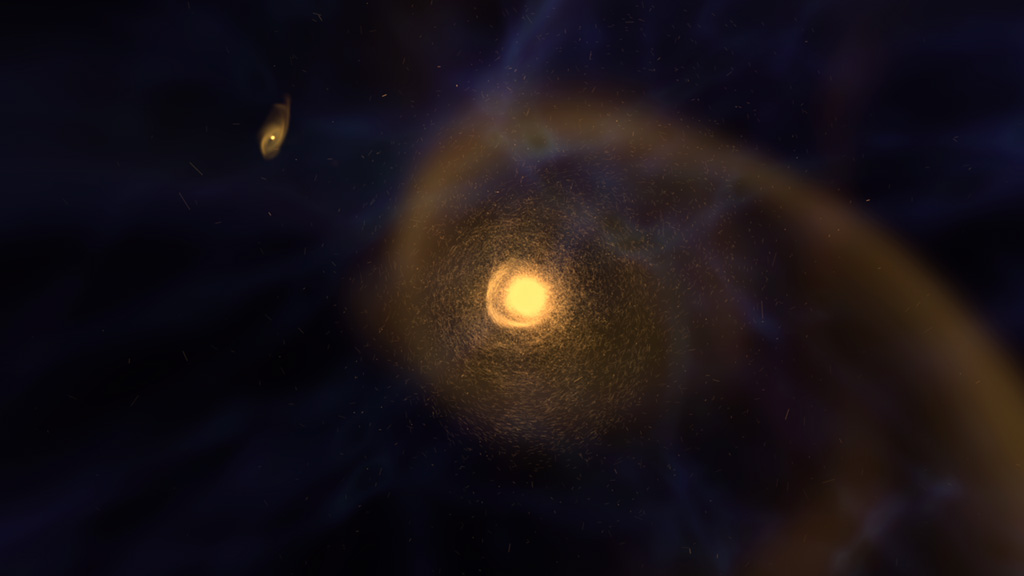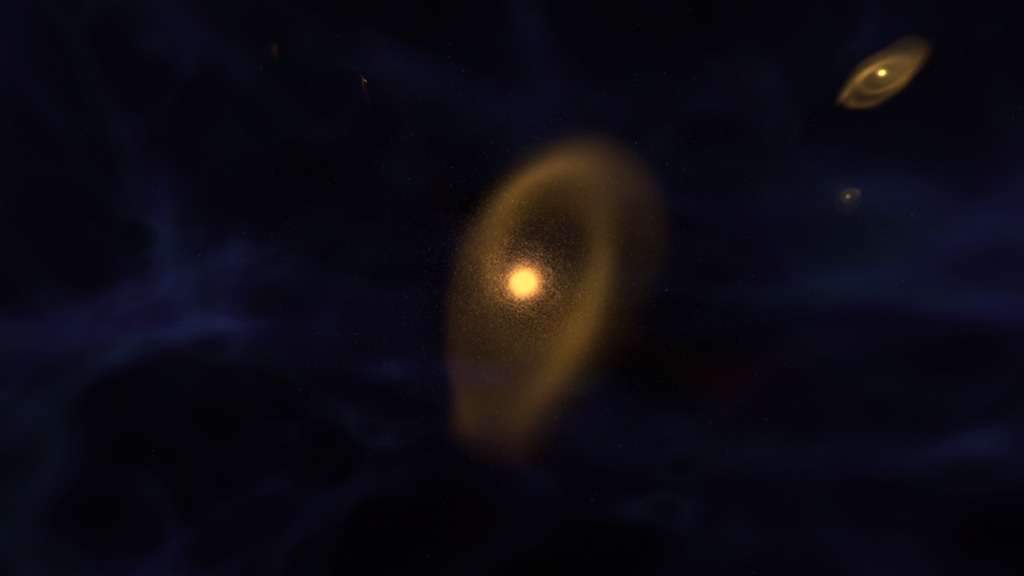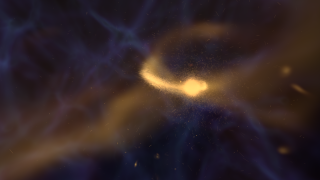Universe
ID: 11534

Galaxies are collections of stars, gas, dust and dark matter held together by gravity. Their appearance and composition are shaped over billions of years by interactions with groups of stars and other galaxies. Using supercomputers, scientists can look back in time and simulate how a galaxy may have formed in the early universe and grown into what we see today. Galaxies are thought to begin as small clouds of stars and dust swirling through space. As other clouds get close, gravity sends these objects careening into one another and knits them into larger spinning packs. Subsequent collisions can sling material toward a galaxy’s outskirts, creating extensive spiral arms filled with colonies of stars. Watch the video to see this process unfold.



Galaxy Formation




Related Story
Story Credits
Visualizers/Animators:
Donna Cox (AVL NCSA/University of Illinois)
Robert Patterson (AVL NCSA/University of Illinois)
Matthew Hall (AVL NCSA/University of Illinois)
Stuart Levy (AVL NCSA/University of Illinois)
Producers:
Michael McClare (HTSI)
Donna Cox (AVL NCSA/University of Illinois)
Lead Scientists:
Brian O'Shea (Michigan State University)
Michael Norman (University of California, San Diego)
Lead Writer:
Matt Davenport (USRA)
Donna Cox (AVL NCSA/University of Illinois)
Robert Patterson (AVL NCSA/University of Illinois)
Matthew Hall (AVL NCSA/University of Illinois)
Stuart Levy (AVL NCSA/University of Illinois)
Producers:
Michael McClare (HTSI)
Donna Cox (AVL NCSA/University of Illinois)
Lead Scientists:
Brian O'Shea (Michigan State University)
Michael Norman (University of California, San Diego)
Lead Writer:
Matt Davenport (USRA)
Please give credit for this item to:
NASA's Goddard Space Flight Center
Video and images courtesy of NASA/GSFC/National Center for Supercomputing/Advanced Visualization Laboratoy/B. O'Shea and M. Norman
NASA's Goddard Space Flight Center
Video and images courtesy of NASA/GSFC/National Center for Supercomputing/Advanced Visualization Laboratoy/B. O'Shea and M. Norman
Short URL to share this page:
https://svs.gsfc.nasa.gov/11534
Keywords:
SVS >> App
NASA Science >> Universe
https://svs.gsfc.nasa.gov/11534
Keywords:
SVS >> App
NASA Science >> Universe








